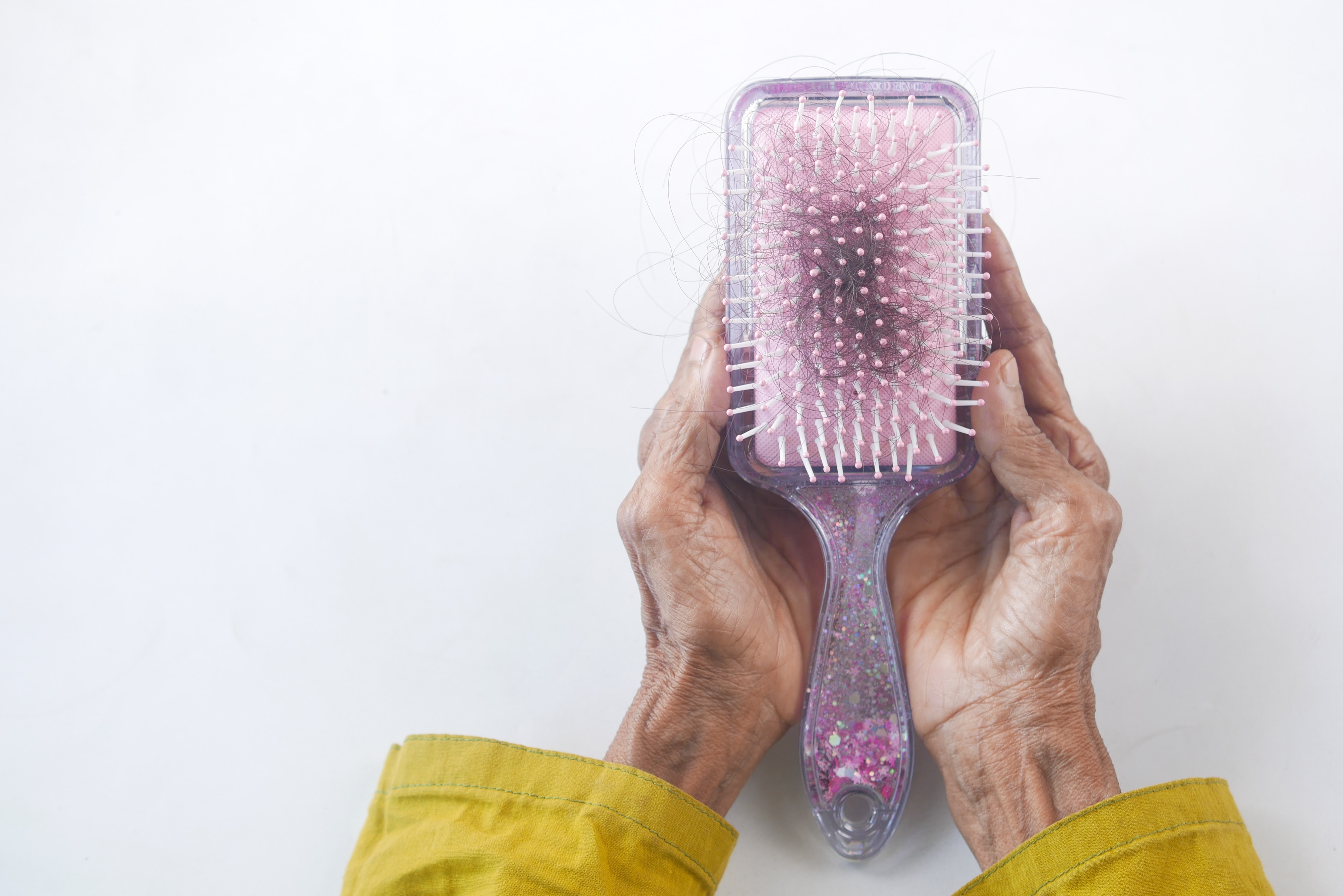I had a 36-year-old patient come in with a significant concern about changes in her hair. Her words were: “I know I’m being vain, but my hair is falling out, and it makes me so stressed.” My first response was to reassure her that worrying about her hair loss wasn’t a type of vanity. In fact, hair loss is a chief complaint among many of the women I see in my practice, and it is very distressing for most of them.
After validating her feelings, I explained we would work through the root cause, of which there could be several. I proceeded to take a detailed history, perform a physical exam, and review her latest blood test results. I found she had a ferritin level of eight, which indicates low iron stores (ideally it should be over 50). Bingo! We had found our starting point. Once I tailored her nutrition and supplements to fit her picture, she started feeling better. She was grateful to have a better understanding of her hair loss concerns, and a path forward.
Every day in my practice, women just like her come in for this very reason. Each cause may be different, but the anxiety is shared. If you are currently struggling with hair loss, rest assured that it is a common complaint, but once the root causes are uncovered and addressed, your hair loss can often be controlled, and in many cases, reversed.
Anatomy of growth
Hair growth is cyclical in nature, involving four phases:
Anagen: Active growth
Telogen: Dormancy
Catagen: An intermediate stage of transition between active growth and end of growth
Exogen: New hair phase where old hair sheds and new hair grows.
Hair and hormones
It’s important to remember that a certain amount of hair shedding is a normal part of this growth cycle. In fact, we lose approximately 50-150 hairs per day, and some aren’t even aware of it! If you have dark and/or long hair you may notice it more than others, which also puts you at risk for over-reporting your hair loss. Sometimes, however, normal hair loss gets accelerated, and since hair loss typically manifests three months after the onset of the cause, paying attention to your normal daily shed is so important.
Hormonal imbalances are a common cause of increased hair loss. For example, classic stages where women see changes in their hair include after delivering a baby and during menopause. This is due to decreased estrogen and progesterone, and potentially increased exposure to testosterone (or an increased sensitivity to testosterone). Other hormonal causes of hair loss include hypothyroidism and chronic elevated stress. Nutrient deficiencies can also lead to decreased hair quality. Hair cells are some of the fastest-dividing cells in the body, so optimal nutrition is vital. Common nutrient considerations for hair quality include low iron, zinc, protein, and overall calories. Finally, other known reasons for hair loss include overtreatment with heat or styling chemicals, certain hairstyles (like tight braids), medications (like chemotherapy), autoimmune disease (like celiac), genetic predispositions, and more.
Common causes of hair loss
While there are many reasons for hair loss, some of the most common causes are listed below.
Postpartum Hair Loss
Postpartum hair loss is very common, typically appearing three to four months after delivery, and resolving within the first year. Known as postpartum telogen effluvium, it is the result of the naturally high estrogen levels during pregnancy which prevent hair shedding, giving way to increased hair loss after delivery as the estrogen levels drop and the previously held onto hair enters into the telogen phase and begins the shedding process. This hair loss is very common around the temple and hairline and is considered reversible.

Menopausal Hair Loss
Menopausal hair loss is similar to postpartum telogen effluvium, and is also, in part, due to decreased estrogen. Hair may feel finer and may fall out, especially affecting the top of the head or along the part. Hair loss with advancing age can be related to shrinking hair follicles, genetics, and elevations in testosterone levels, or increased sensitivity to normal testosterone levels. This type of hair loss is not easily reversed.
Iron Deficiency Hair Loss
According to medical research iron deficiency is the most prevalent single nutrient deficiency worldwide. Symptoms of iron deficiency include pale skin, unexplained fatigue, shortness of breath, weakness, rapid heartbeat, brittle nails, and hair loss. Many people are born with iron deficiency that goes undetected for years. It is also very common in those who avoid animal products, menstruating women, or women who have been pregnant. But because too much iron can be toxic, it’s important to talk to your healthcare provider before supplementing. The most accurate way to diagnose iron deficiency is through bloodwork. Hair loss due to iron deficiency can be reversible.
Hypothyroidism Hair Loss
Patients with underactive thyroids may also often have concerns over hair loss. This can be best evaluated through thorough bloodwork, including tests of TSH, free T3, free T4, and thyroid peroxidase antibodies. When you get lab results, be sure to speak to your health care provider about the difference between out of range and optimal values. One of the most common forms of hypothyroidism, the autoimmune disorder Hashimoto’s Thyroiditis, carries particular risk for poor hair quality, including changes in hair texture (coarse, brittle) appearing over the whole head or in specific patches. An overactive thyroid can also lead to hair loss, making lab assessment imperative. Hair loss due to low thyroid function is considered reversible.
Chronic Elevated Stress
Chronic stress is a big factor in many patients’ overall health. The effect of stress on any individual depends on their inherent resilience, the amount of stress they have experienced, and how long it has persisted. When we're stressed, our adrenal glands produce the hormone cortisol, which in turn helps signal our hair follicles to shift from the growth phase into the transition phase, and then hair will fall out. History-taking and urine or salivary cortisol measurements can help clinicians assess how impactful stress has been on a particular patient. Also, when stress levels are high, our digestion is affected and nutrient absorption may be lowered, which can also exacerbate hair loss.
As frustrating and devastating hair loss can be, know you’re not alone! This all-too-common occurrence can be helped by reaching out to your healthcare provider so you can figure out the root cause of your situation. With appropriate testing and support, your bad hair moment may not be your new reality.
You May Also Like: Postpartum Hair Loss Help






